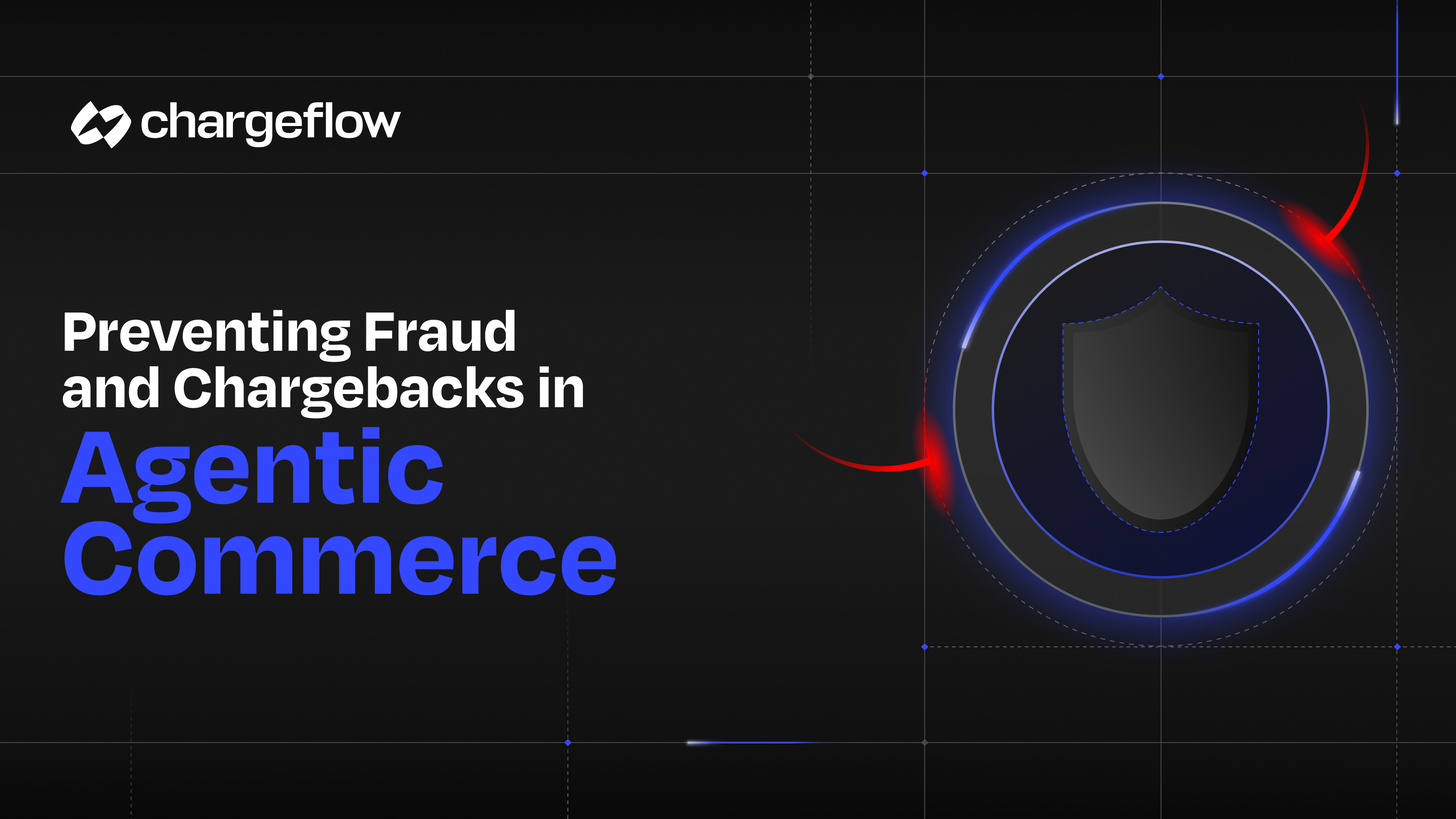Highly Successful Chargeback Reversal Tip for E-commerce Merchants

Chargebacks?
No longer your problem.
Recover 4x more chargebacks and prevent up to 90% of incoming ones, powered by AI and a global network of 15,000 merchants.
Boost your e-commerce profits with this highly effective chargeback reversal tip. Get insider knowledge to reclaim lost revenue now!
As an e-commerce store owner, you know that any unexpected monetary losses can have a huge impact on your business. One of the most common and troublesome sources of these losses comes from chargeback disputes - customers successfully make a dispute with their banks regarding their payment to your store and retrieve their money back.
These not only rely heavily on time-consuming paperwork but are also quite financially draining for merchants, often resulting in costly fines from credit card holders as well as irreversible damages to reputation when disputes become too frequent.
However, there is one highly successful tip that may be able to ease much of the burden associated with chargebacks if acted upon swiftly and cautiously - reversal requests! Keep reading to find out more about this chance at reclaiming lost payments and how to apply it for maximum benefit!
What is Chargeback Reversal?
Chargeback reversal is a helpful tool for merchants and financial organizations to fight against increasing instances of fraud. When a customer disputes a charge with their credit card company, the issuing bank may contact the merchant and request evidence that the transaction is valid.
The merchant can then initiate a chargeback reversal with the bank to clear things up - if that evidence is enough to prove there was no fraudulent activity involved, the disputed money amount will be returned to them.
With this simple yet powerful process, merchants can protect themselves from fraudulent transactions while providing their customers with an efficient resolution process they can trust.
Tips for Chargeback Reversal
1. Respond promptly
When faced with a chargeback, responding quickly and efficiently is an essential part of getting the chargeback reversed. This involves ensuring that the cardholder receives information quickly and precisely, allowing them to make a fair and informed decision while preventing any further delays.
It is important to provide updated product details and clear communication regarding the purchase. Additionally, submitting all relevant evidence and providing timely responses with accurate information can help secure a favorable outcome for both you and the customer.
It’s possible for time alone to be key in reversing chargebacks; if you can react quickly enough, this could mean that no documentation is even required. As such, staying on top of responding when struggling with chargebacks can be the difference between success or failure in achieving desired results.
2. Keep accurate records
Keeping accurate records of transactions is a crucial component of chargeback prevention. Through proper documentation, merchants can quickly and accurately access vital details regarding customer purchases to verify the legitimacy of a claim.
Important pieces of information may include, but are not limited to, contact information, transaction dates, itemized receipts or orders, credit card statements when applicable, shipping and delivery confirmations, email correspondence with customers, and anything else that could help support your case.
Additionally, it is important to ensure regular document maintenance to increase speed and efficiency when needed - this should include regularly backing up digital files and removing outdated documents.
By taking precautions such as these before filing a chargeback dispute you can be proactive in reducing your chances of fraud and chargebacks while ensuring you have the best possible evidence available during the rebuttal process.
3. Understand the reason for the chargeback
It is important to understand the different types of chargebacks that can occur in different scenarios. Chargebacks resulting from merchant errors, consumer fraud, friendly fraud, and processing errors are all reasons for issuing a chargeback.
By being aware of all these potential causes, merchants are in a better position to know how to minimize risks and ensure their customers’ satisfaction, while still protecting themselves financially.
Ultimately, understanding the reason behind each chargeback gives the merchant invaluable insight into the customer experience and helps them make improvements where necessary.
4. Provide clear communication
Clear communication is the key to successful chargeback reversals. Having complete and accurate information promptly can make all the difference when engaging with issuers in hopes of reversing a chargeback.
Consider including as much detail as possible with your request - explain the reason for your dispute, provide insurance or guarantees that similar situations will not arise again, and be prepared to show evidence that supports your claim.
It may include customer records, contract documents, digital transcriptions, or even videos. It's important to be concise, but also provide enough context so the issuer can get an idea of what happened and how you plan to address it going forward.
With clear communication, reasonable efforts can be made on both sides which will help expedite the process and result in a successful chargeback reversal.
6. Use Chargeback Management Tools
Chargeback management tools have rapidly become an essential resource for any e-commerce merchant as they navigate the complex, ever-changing world of chargeback disputes.
From preempting inaccurately coded transactions to analyzing dispute patterns, chargeback management tools provide merchants with accurate insights into all aspects of the chargeback process, leading to cost savings and positive outcomes in dispute resolution.
Chargeflow is a respected, fully automated solution trusted by merchants worldwide for its success in reversing a wide variety of chargebacks across multiple platforms.
With the help of this tool, merchants can uncover potential issues before submitting a response and increase their chances for success using deep analytics and automated decision-making.
6. Offer excellent customer service
Providing excellent customer service is an integral part of avoiding and recovering from chargebacks. By treating customers with respect, offering timely responses, and professionally providing helpful solutions, merchants can go a long way in establishing positive relationships with their customers.
Merchants should also maintain regular communication with their customers throughout the ordering and delivery process by sending out notifications when there are delays or cancellations.
Marking order status to "delivered" even if an order has been shipped instead of waiting for a customer to confirm receipt can help prevent unnecessary chargebacks. Directing customers to contact customer service before filing a chargeback request can provide the opportunity to solve any issues without it resulting in a financial loss from chargeback fees.
7. Review and Revise Policies
Reviewing and revising policies is a key component of success when it comes to chargeback reversal. A clear and concise description of policies will help to prevent disputes in the first place since customers are aware of what they are consuming when using a product or service.
When reviewing policies for disputes, address any issues that may cause customer dissatisfaction, such as billing errors, returns, and refunds.
Training employees on the protocol for chargebacks is also essential; this forecasts on how to handle a customer’s dispute from start to finish and sets expectations with customers to ensure each transaction is performed fairly.
Understanding the process in which policy changes need to be reviewed and revised means businesses can best equip their team members to handle payment disputes quickly and without penalty.
8. Monitor Chargeback Metrics
Understanding how well you are performing in terms of chargeback reversals should be a critical component of your chargeback strategy; monitoring the right chargeback metrics is necessary to evaluate and assess that performance.
Key performance indicators (KPIs) to analyze include overall chargeback success rate, carrier acceptance rate, chargeback appeal success rate, number of disputes raised with customers, time to dispute resolution, average reversal turn-around time, total merchant revenue lost/recovered from disputes, and associated costs of dispute management tools and staff time.
All of these KPIs should be tracked regularly to understand improvement opportunities and trends in areas such as couriers or products that may have difficult-to-resolve disputes. Being aware of any dramatic fluctuations in the data can indicate an issue that needs immediate attention from your team.
By constantly monitoring your KPIs, you can identify trouble spots before it’s too late and make the most out of your efforts to minimize potential losses due to customer disputes.
Final Thoughts on Chargeback Reversal
E-commerce merchants have become highly dependent on successful chargeback reversal strategies to protect their businesses. This is because chargebacks can be shadowy, occur multiple times, and are hard to prevent.
Knowing this, having tips to help with the process can drastically improve success rates of chargeback reversals. By outlining the steps and challenges associated with the reversal process, merchants can benefit from improved dispute management and possibly win more cases.
These tips for chargeback reversal should provide guidance when attempting to reclaim funds taken through fraudulent activity.
Furthermore, merchants can further secure transactions by using automated solutions such as Chargeflow autopilot solutions which can recognize fraud patterns earlier on and prevent costly chargebacks altogether.
Take proactive measures today and reap the rewards of successful chargeback reversals while avoiding losses due to fraud disputes! Prevent Chargebacks and Fight Disputes with Chargeflow autopilot solutions now!

Chargebacks?
No longer your problem.
Recover 4x more chargebacks and prevent up to 90% of incoming ones, powered by AI and a global network of 15,000 merchants.






























.png)








